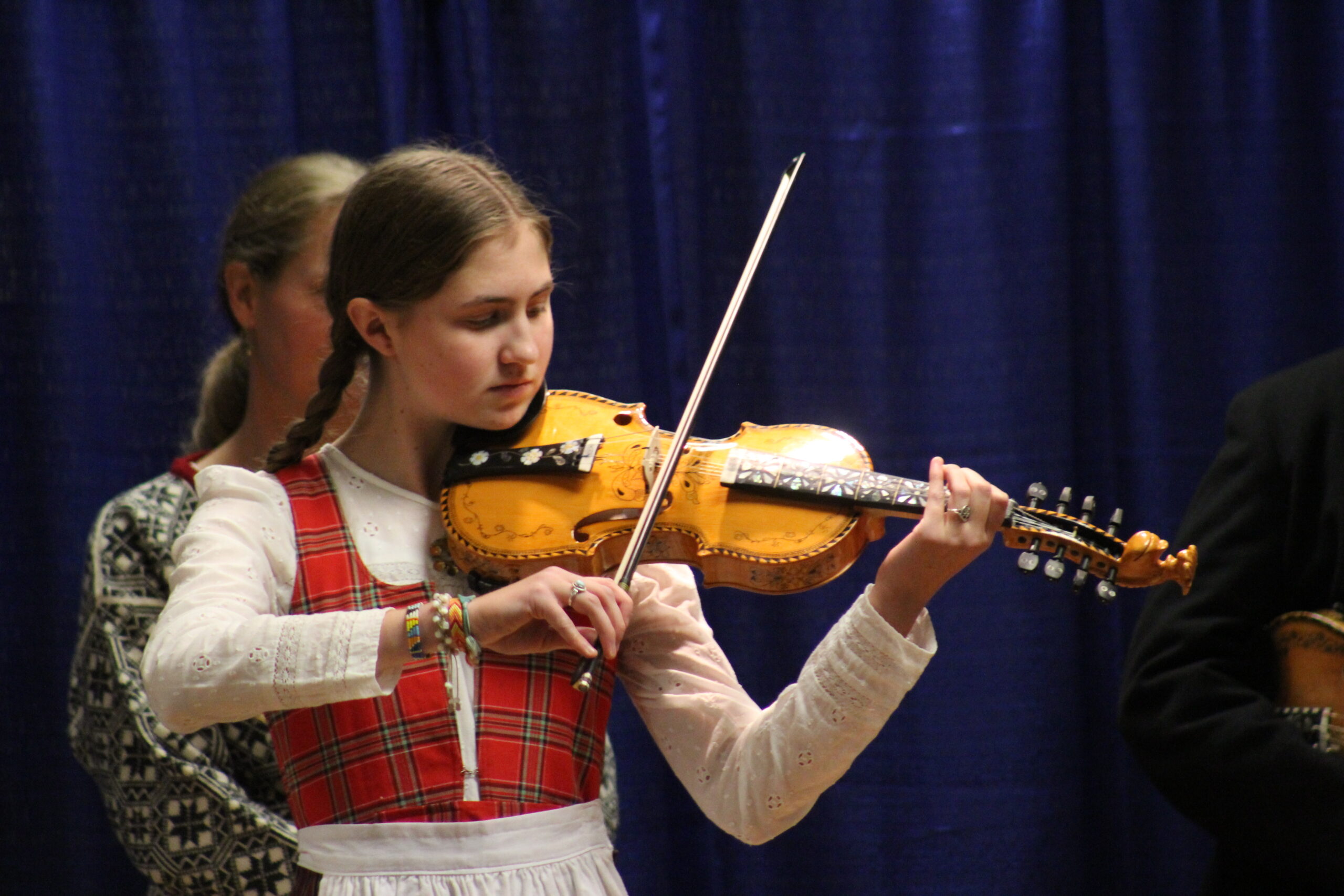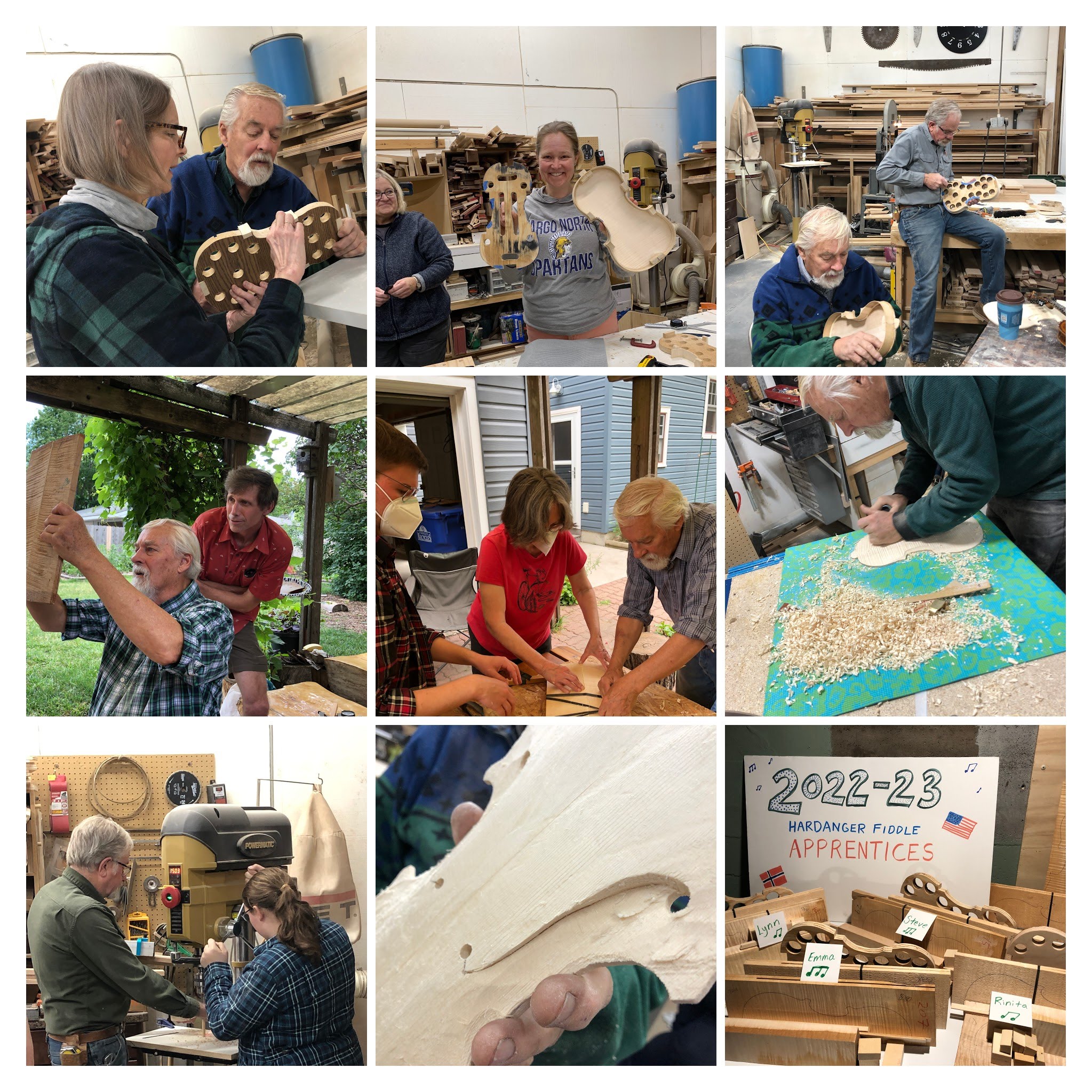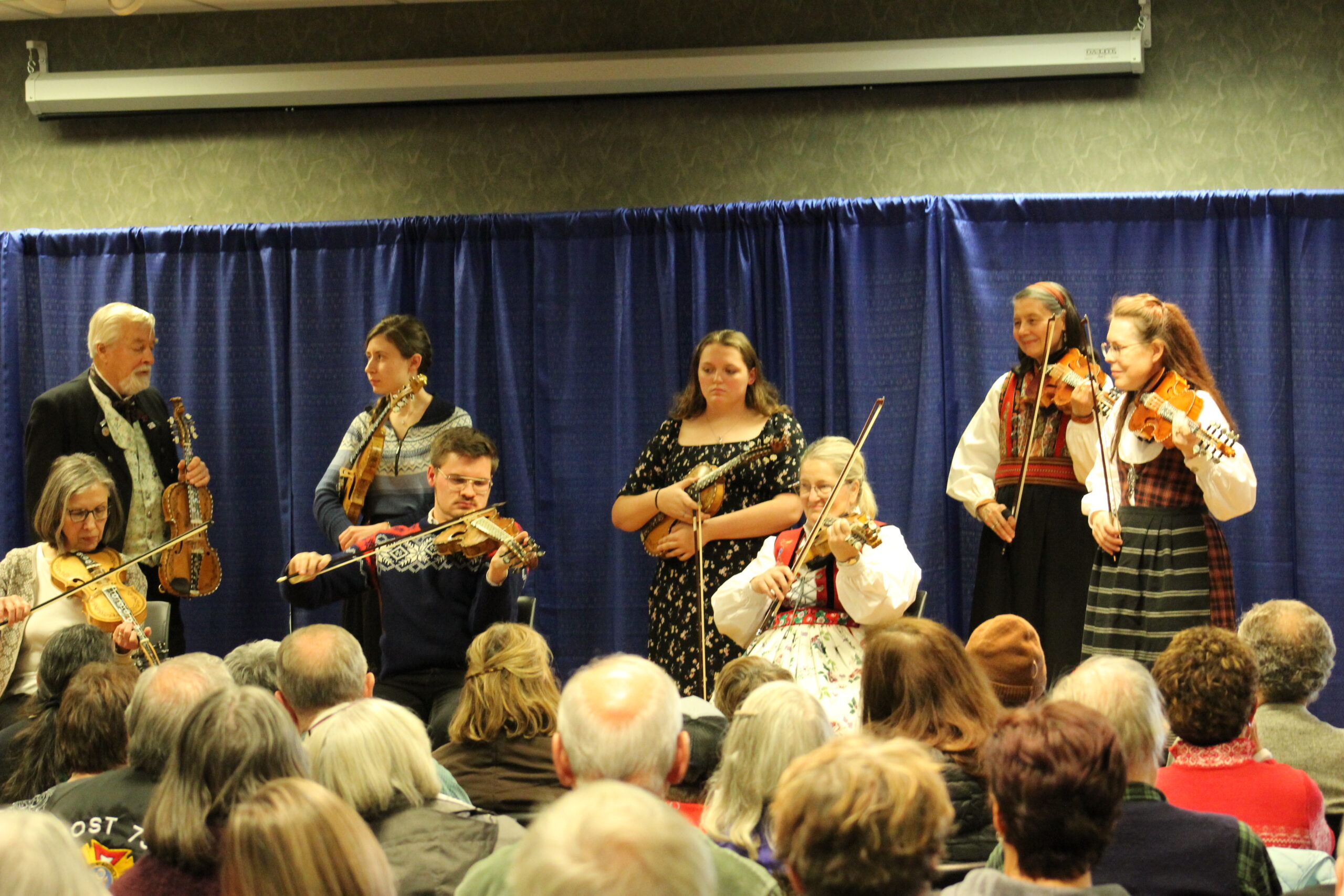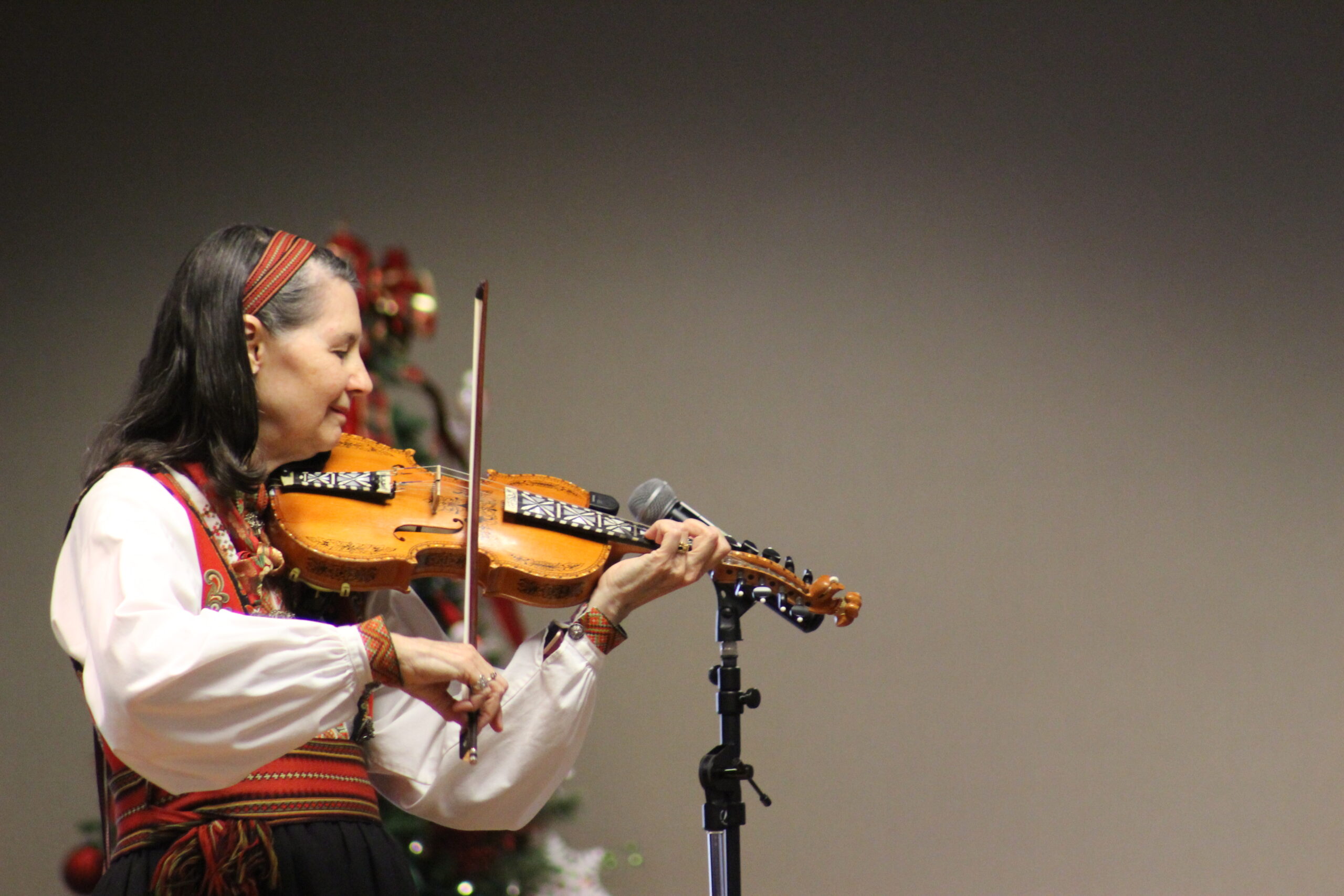In Norway, the hardingfele, or the Hardanger fiddle, is deeply woven into the nation’s cultural tapestry. From the earliest known iteration made in 1651 by Ole Jonsen Jaastad, the instrument originates from its namesake region, the western district of Hardanger, where it was traditionally used to play wedding music, dances, and other songs.
A Hardanger fiddle looks at first glance like an intricately ornamented violin, with a fingerboard and tailpiece often inlaid with mother-of-pearl, ebony, or bone. It is more lightweight, however, with four slimmer strings, ink decorations on the wooden body, and the scroll at the end often carved into the likeness of a dragon or wild animal.

Another key element of a Hardanger fiddle is the addition of sympathetic strings, which sit in a layer below those that the bow touches, vibrating when the instrument is played and adding a richness to the sound. “You are playing, generally, two notes at once whenever you play a Hardanger fiddle,” says luthier Robert “Bud” Larsen, a side effect of the instrument’s flat bridge.
Larsen, who is based in Brainerd, Minnesota, was introduced to the art of fiddle-making and restoration with the help of local violin-maker Gunnar Helland. Helland had emigrated to the U.S. from Norway in 1901. After stints in Chippewa Falls, Wisconsin, and Minneapolis, he established a shop in Fargo, North Dakota, to carry on his family’s craft tradition.
“Our family moved into the same building where Gunnar had his shop,” Larsen says. “We hung out a lot, and I was very interested in what he was building. When I was in the seventh grade, he gave me an old violin and helped me through the process of restoring it.”
Larsen’s lifelong love for the instrument was born. Over the next several decades, he would build at least 40 Hardanger fiddles and restore more than twice that many.
Preserving, and Evolving, Tradition
Troyd Geist, state folklorist of North Dakota, is a big fan of traditional culture and history. He focuses not only on the heritage of traditional arts but also sees the potential for craft to contribute to health and a sense of wellbeing. He heads an apprenticeship program where a master artist is paired with a younger person in order to pass along knowledge.

Geist is fascinated by how U.S. makers have gradually evolved the Hardanger fiddle over time. Though the instruments have maintained many of their recognizable features, their designs have become distinctly American.
“For instance, the fiddles in Norway would have different rosemaling designs and different flowers that they really focus on,” Geist says. “And the head above the fret is often carved, in Norway, like a lion or a dragon. They do that here, too, but they also carve, instead of a lion or a dog head on the end of it, a buffalo head.”
Larsen and others in the community who are passionate about the Hardanger fiddle liken the craft to being similar to language.
“We know that a language that is not willing to change will soon die,” says Larsen, who was a linguist in Papua New Guinea for more than 20 years before turning to fiddle making. “If people say a language should be prescriptive and you should write it the way the dictionary tells you to, and speak it that way, then the language will die out because it can’t change. And that’s the same with Hardanger fiddle music. Because new music is being written, and it’s being used in different genres as well, it will stay with us for a long time because the music has learned to adapt to people’s interests and cultures.”
Both Geist and Larsen agree that it’s important to continue to teach others how to make the fiddles, which can sometimes take a novice apprentice up to two years to complete. Some makers seek to protect their secrets, but “if you’re not willing to share broadly and freely, the tradition is going to die,” Geist says.
MARKUS KRUEGER, HISTORICAL AND CULTURAL SOCIETY OF CLAY COUNTY“[The music] is a symbol of Norwegian culture and heritage, and even more than that, it’s a symbol of Midwest culture.”
A Generational History
First comes the making of a fiddle and then, of course, comes the playing. Arts Midwest’s GIG Fund recently supported an event at the Historical and Cultural Society of Clay County (HCS) where more than 220 people attended a concert performed by the Fargo Spelemannslag.
A spelemannslag is a group of folk musicians, often dominated by fiddles.
The wintertime concert featured a song written two centuries ago by Eirik Medås. “Eirik’s direct descendant, a high school student named Elsa Ruth Pryor, played a new song that she wrote herself, on a Hardanger Fiddle that she made herself,” says Markus Krueger, programming director of HCS.

“Minnesota and North Dakota are the two most Norwegian states in America. For a lot of people in our community, this is the music of their childhood that they remember their parents and grandparents playing,” Krueger says, reflecting on the significance of the event. “It’s a symbol of Norwegian culture and heritage, and even more than that, it’s a symbol of Midwest culture.”
The concert featured performances by Bud Larsen and Loretta Kelley, the president of the Hardanger Fiddle Association of America. It was a meaningful showcase of a living tradition, passed down through generations.
“The immigrants brought their fiddles with them, and they kept playing them in America, says Krueger. “They kept making them in America. We still make them and play them today.”
Loretta Kelley’s performance at the Historical and Cultural Society of Clay County was made possible in part by the GIG Fund. The GIG Fund provides flexible grants for nonprofit organizations to support programs and activities featuring professional artists.
The GIG Fund is a program of Arts Midwest that is funded by the National Endowment for the Arts, with additional contributions from the Illinois Arts Council Agency, Indiana Arts Commission, Iowa Arts Council, Michigan Arts and Culture Council, Minnesota State Arts Board, North Dakota Council on the Arts, Ohio Arts Council, South Dakota Arts Council, and Wisconsin Arts Board.
